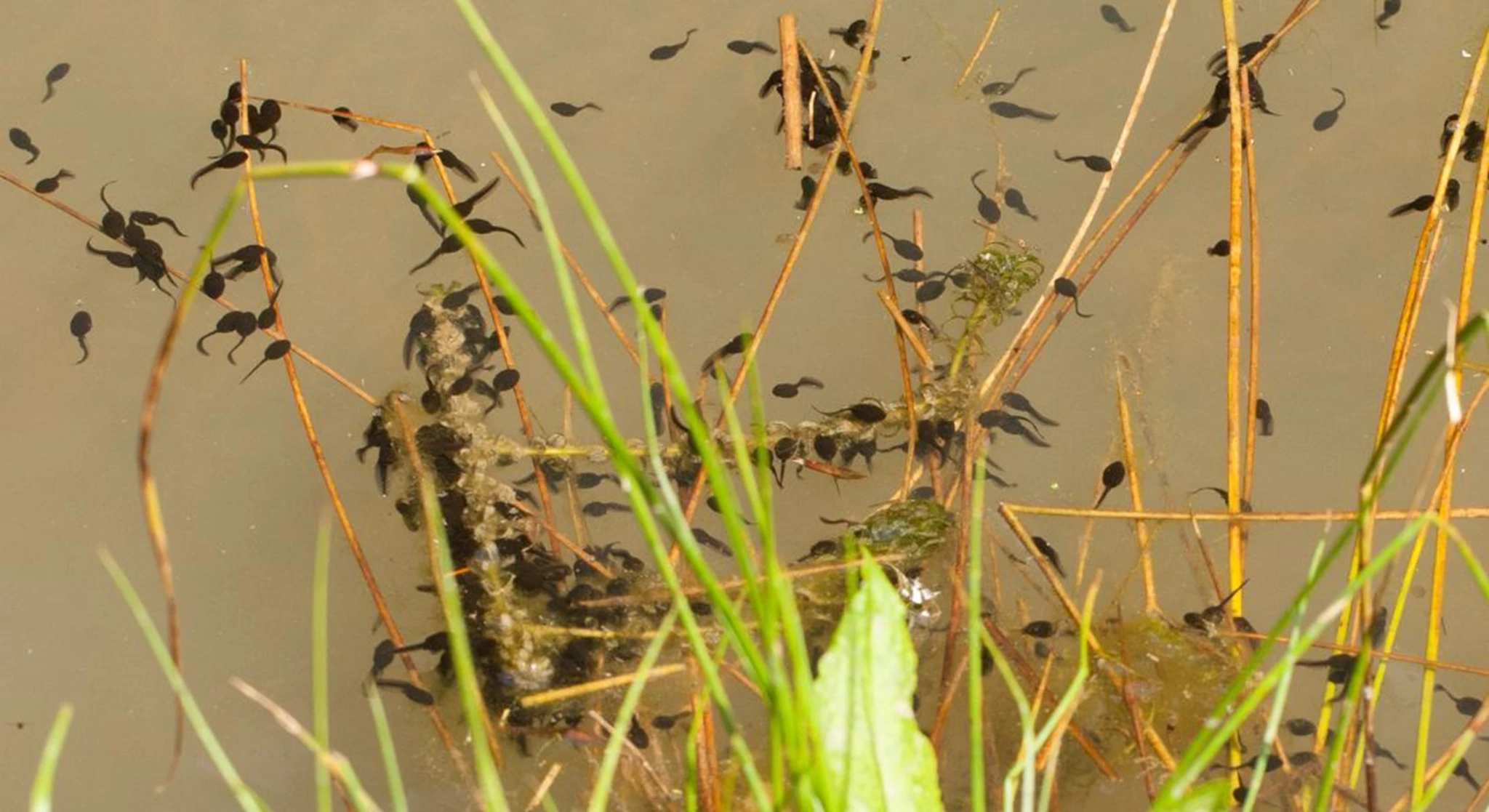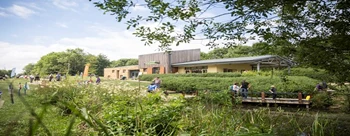Wildlife blog: Amphibians in Spring

At this time of year, our ponds are full of life and you can see lots of tadpoles and toadpoles swimming around or resting on logs under the water, but can you tell the difference? Toad tadpoles or toadpoles tend to be darker in colour and chunkier in the body whereas frog tadpoles are slimmer and covered in gold flecks.
Frogs and toads lay large numbers of eggs as a natural way to ensure the survival of some of their offspring. It’s estimated that around one in fifty of the eggs laid in the pond will actually make it out of the pond as a froglet or toadlet. The rest will be eaten by pond predators such as newts, as well as dragonfly and beetle larvae.
Did you know that during the Spring amphibians return to ponds to breed? They will often return to the pond where they were spawned to breed themselves. This is why it is best to leave tadpoles in their natural habitat. If they remain close to the pond they were spawned in, they don’t have to make the long, dangerous and sometimes deadly journey across footpaths, fields and roads to return to their birth pond for the breeding season.
Given that only a small number will survive and that of those only a handful will make it to adulthood due to land predators such as grass snakes, birds and badgers, it is really important to leave the tadpoles in our ponds. Please do not take spawn, tadpoles or amphibians from our ponds. By taking them to a different pond, you may unknowingly cause a negative impact on the ecosystem in that area. You may be spreading diseases between locations and can also encourage the spread of invasive pond plant species.
Frogs and toads will usually find their own way to good-quality ponds. If you have a new garden pond, it can take several years for a pond to colonise but it is always best to let this happen naturally. If amphibians don’t arrive of their own accord, there may be a reason for this so adding tadpoles to your pond could be harmful.
Some ponds regularly dry out, which is a part of natural seasonal cycles. Any tadpoles and spawn in these ponds should also be left alone as they will be an important food resource to other species. Our team monitor and carry out surveys on the ponds in the parks to measure their quality. We take action to help any ponds that have declined. Should you be concerned about a pond please email us and we can check where it is in the monitoring schedule.








